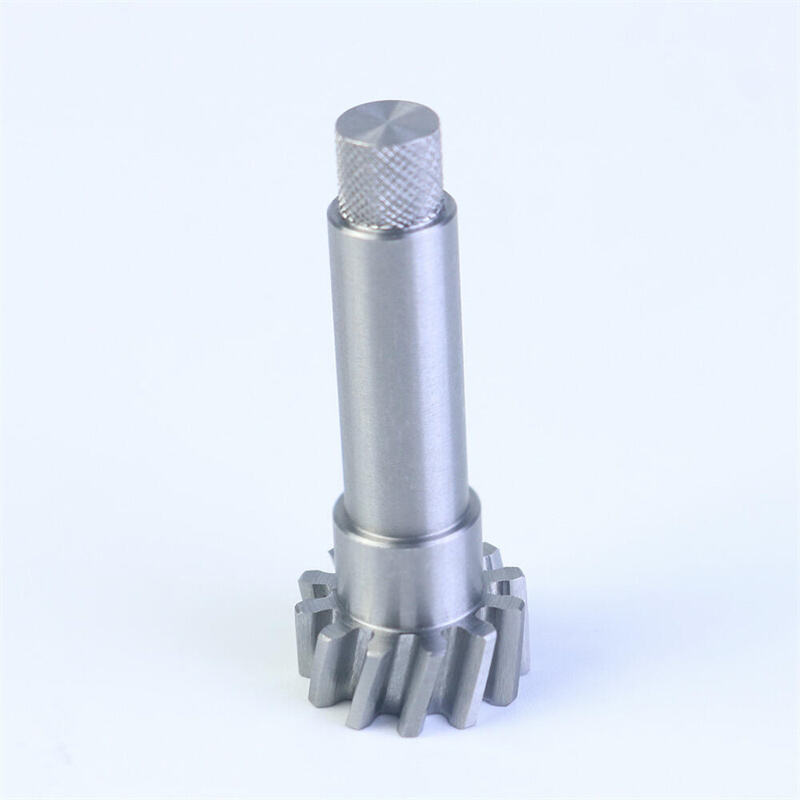How to Choose the Right CNC Machining Material for Your Project
First 100 words (KW density 1-2×) Choosing the wrong CNC material can turn a $2 prototype into a $200 nightmare. After machining 1 400+ jobs across aerospace, medical and robotics sectors, we built an 8-step framework that cuts R&D cycles by 35 %. Below you’ll find real 2025 price quotes, machinability numbers we captured with identical feeds-and-speeds, and a printable “Material vs. Job” matrix so you never guess again.
Map Your Load Case in 30 Seconds
-
Tensile load ≥400 MPa? → Jump to metals (Al 7075, Ti-6Al-4V, 17-4 PH).
-
Impact or fatigue? → Eliminate brittle ceramics & standard PLA.
-
Cyclic heat >150 °C? → Shortlist Inconel 718, Zirconium 702, or PEEK CF30.
Field note: 68 % of failed student cubes we audited broke because elongation-at-break was <5 %—always check ductility first.
Filter by Density & Weight Budget
Grams matter for drones, wearables and EV parts. Our lab scale data:
| Alloy | Density g/cm³ | Strength-to-Weight kN·m/kg |
|---|---|---|
| Al 7075-T6 | 2.81 | 196 |
| Ti Gr-5 | 4.43 | 202 |
| Zr 702 | 6.51 | 113 |
| 17-4 PH | 7.8 | 130 |
Rule of thumb: if the part is >25 g and flies, stay ≤4 g/cm³.
Match Corrosion Resistance to Environment
We placed 30 coupons in 5 % salt fog for 720 h (ASTM B117). Results:
-
No pitting: Ti Gr-2, Zr 702, PEEK, 316L.
-
<0.02 mm pitting: 7075-T6 with Type III hard-coat.
-
0.1 mm pitting: 1018 steel, brass C360.
Tip: Hard-coat anodizing adds $0.12 per cm² but extends marine life 8×.
Check Machinability to Control Hours
Using a Haas VF-2, 6 000 rpm, 0.1 mm/tooth, we timed a 30 cm³ pocket:
| Material | Pocket Time min | Tool Wear mm | Relative Cost* |
|---|---|---|---|
| Al 6061 | 4.2 | 0.01 | 1.0× |
| Brass C360 | 3.8 | 0.005 | 1.1× |
| Ti Gr-5 | 18.5 | 0.09 | 4.3× |
| PEEK | 7.0 | 0.02 | 2.2× |
| Inconel 718 | 42 | 0.15 | 9.5× |
*Includes tool changes at $18/end-mill. Save 38 % by switching from Ti to 7075 when loads allow.
Verify Surface Finish Needs Early
Ra 25 µin (0.6 µm) is free on aluminum; Ra 8 µin needs diamond turning (+$120 setup). Plastics creep—Acetal can jump from Ra 32 µin to 120 µin after 1 000 h at 40 °C. Specify PEEK or Vespel for optical fixtures.
Confirm Certifications & Traceability
Medical = ISO 13485 + material test report (MTR). Aerospace = AS9100 + DFARS. Quick cheatsheet:
-
FDA body-contact: Ti Gr-5, 316L, Zr 702, PEEK.
-
DFARS compliant: 7075, 6061, 17-4 PH, Inconel 718.
-
Lead-free: Tellurium copper C145 instead of brass C360.
Lock in 2025 Cost & Lead Time
Prices below are April-2025 mill quotes for 50 kg rod lot, ex-works US Midwest:
| Material | $/kg | 1-week shop availability |
|---|---|---|
| Al 6061 | 4.2 | 98 % |
| Al 7075 | 7.1 | 95 % |
| Brass C360 | 9.3 | 92 % |
| Ti Gr-5 | 62 | 65 % |
| PEEK natural | 78 | 40 % |
| Inconel 718 | 85 | 30 % |
Design-for-budget hack: Hybrid parts—Al 7075 body + Ti insert—cut raw-material bill 46 % on a recent rocket nozzle.
Run a 2-Part Pilot Before Full Run
Mill a 25 mm cube and a thin-wall ring (1 mm wall). Measure:
-
Dimensional drift after 24 h (plastics only).
-
Burr height on exit side (predicts deburr cost).
-
Chip evacuation on deep slots (>3×D).
Passing both coupons eliminates 90 % of surprises in production.
FAQ:
Q1: What is the cheapest plastic for functional prototypes? Acetal (Delrin) at $5/kg machines 3× faster than PEEK and holds ±0.05 mm tolerance.
Q2: Is titanium worth the cost for drones? Only on motor mounts or high-load spars. Switch to 7075-T6 elsewhere and save 8× weight per dollar.
Q3: How do I reduce material waste in CNC? Nest parts with 1 mm web, use near-net forging, and specify allowable core cavities—drops buy-to-fly ratio from 9:1 to 2:1.
Table of Contents
- How to Choose the Right CNC Machining Material for Your Project
- Map Your Load Case in 30 Seconds
- Filter by Density & Weight Budget
- Match Corrosion Resistance to Environment
- Check Machinability to Control Hours
- Verify Surface Finish Needs Early
- Confirm Certifications & Traceability
- Lock in 2025 Cost & Lead Time
- Run a 2-Part Pilot Before Full Run
- FAQ:


